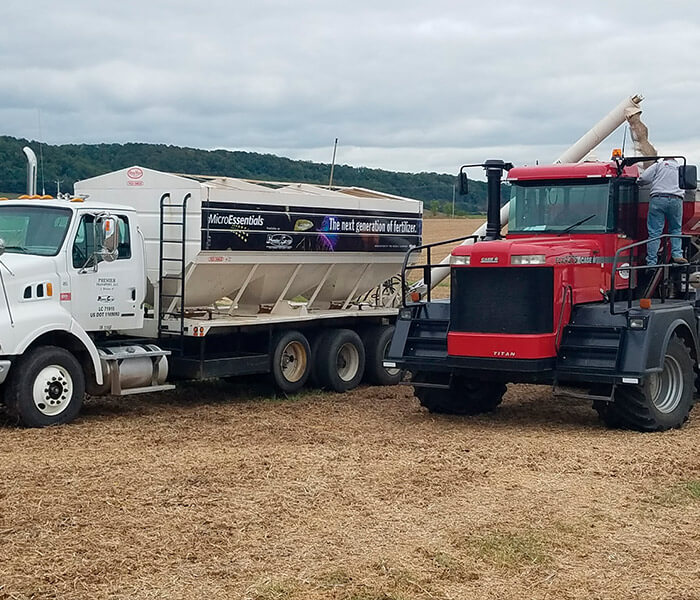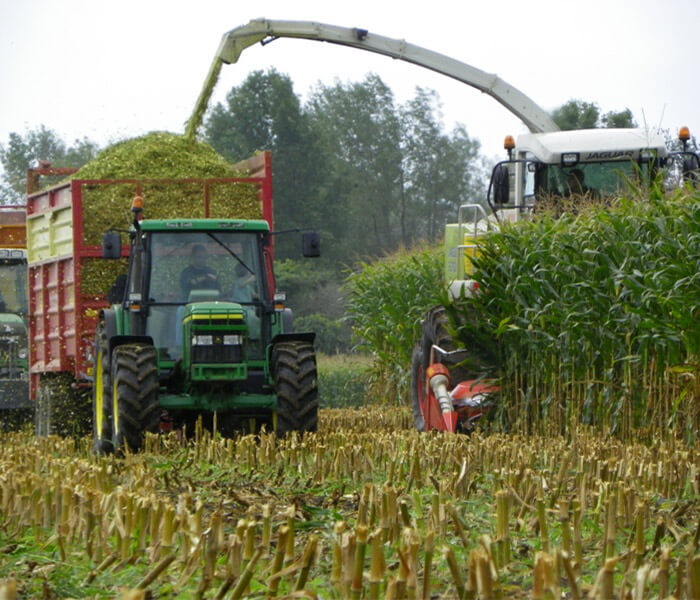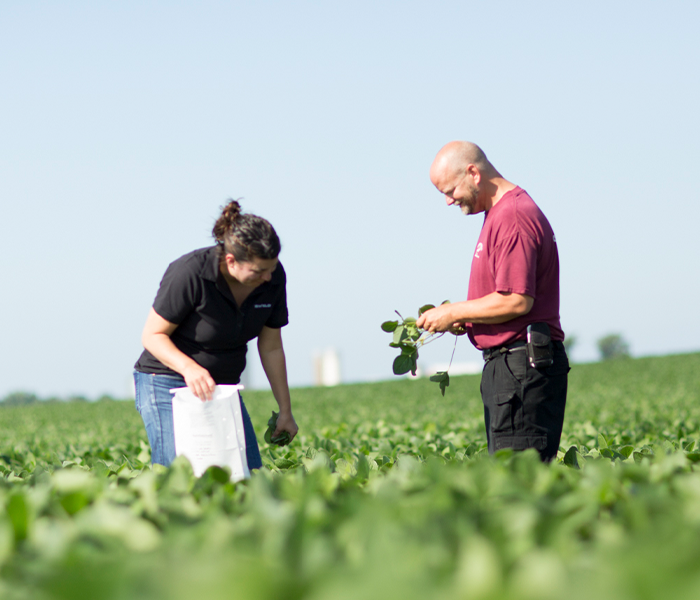Set Your Silage Up For Success.
Many moving parts need to be in place to get the best quality silage at harvest. With harvest quickly approaching, consider these four tips to help inform your silage harvest strategy.
1. Prep Your Equipment
Don’t wait until the last minute to get your equipment ready for harvest. Ensure you have equipment adjusted correctly depending on the cut length you’re aiming for.
2. Stay on Top of Moisture Checks
Harvesting the crop at the proper moisture based on your storage preferences is a key factor in determining forage quality. You should keep track of tassel dates and plan to walk fields to check kernel milk line progression 30 to 40 days post-tassel. While kernel milk line is a good reference for chopping date, it’s best to use whole plant moisture for a more accurate indicator.
Technology tools, including the R7® Field Monitoring Tool, can help you identify when fields may be suitable to begin moisture checks. Sample silage and use a microwave or moisture tester to determine moisture content ahead of harvest. The ideal plant moisture for harvesting silage is between 65% and 72%. Moisture percentage may vary by field, so be sure to select multiple areas for moisture testing. Contact a member of our team for help gauging moisture levels in your fields. Check out Winfield United's article: Tap Into Tech for Silage Harvest
3. Make Timely Cuts
When you’ve determined that moisture is appropriate for chopping silage, don’t delay getting into the field. Harvesting silage that’s too dry can decrease its digestibility. Having a plan for harvesting and storing silage — and quickly executing on that plan — can help preserve the quality and nutritional value of the forage.
4. Fine-Tune Bunker Management
Proper silage storage is critical to maintaining the quality and nutritional value of your crop. Make sure to pack silage tightly to reduce yeast and mold growth and cover it quickly with high-quality plastic to keep oxygen out. Also, consider adding additives or preservatives that can help maintain silage quality. Our agronomy team can help you choose the right products based on your needs.
We know silage harvest time can be hectic. Our team is here to help you get the highest-quality forage, use the form below to contact an agronomist for recommendations.
Ken Jahnke
Division Sales Manager



